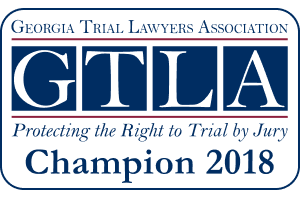Civil Enforcement of Fatigue-Related Federal Motor Carrier Safety Regulations
I am sympathetic to a lot of the tired truckers on the highway. Many of them are overworked and underpaid with terrible working conditions. Sometimes I represent seriously injured truck drivers, and in the course of working on cases I often interview truckers who tell me, off the record, how trucking companies and shippers insist on delivery schedules that cannot be made legally or safety. However, when those conditions result in serious injury or death to innocent people on the highway, I have my job to do.
The Federal Motor Carrier Safety Regulations often referred to in cases where tired truckers wreck include the following:
49 C.F.R. § 392.3, Driver Impairment.
No driver shall operate a commercial motor vehicle, and a motor carrier shall not require or permit a driver to operate a commercial motor vehicle, while the driver’s ability or alertness is so impaired, or so likely to become impaired, through fatigue, illness, or any other cause, as to make it unsafe for him/her to begin or continue to operate the commercial motor vehicle.
FMCSR, 49 C.F.R. § 390.11 Motor carrier to require observance of driver regulations.
Whenever … a duty is prescribed for a driver or a prohibition is imposed upon the driver, it shall be the duty of the motor carrier to require observance of such duty or prohibition. If the motor carrier is a driver, the driver shall likewise be bound.
FMCSR, 49 C.F.R. § 390.13, provides that
“No person shall aid, abet, encourage, or require a motor carrier or its employees to violate the rules of this chapter.” It does not say “no motor carrier.”
FMCSR, 49 CFR 390.5 defines “person” as follows:
Person means any individual, partnership, association, corporation, business trust, or any other organized group of individuals.
FMCSR, 49 CFR § 395.3 Maximum driving time for property-carrying vehicles.
Subject to the exceptions and exemptions in § 395.1:
(a) No motor carrier shall permit or require any driver used by it to drive a property-carrying commercial motor vehicle, nor shall any such driver drive a property-carrying commercial motor vehicle:
(1) More than 11 cumulative hours following 10 consecutive hours off duty; or (2) For any period after the end of the 14th hour after coming on duty following 10 consecutive hours off duty, except when a property-carrying driver complies with the provisions of § 395.1(o) or § 395.1(e)(2). (b) No motor carrier shall permit or require a driver of a property-carrying commercial motor vehicle to drive, nor shall any driver drive a property-carrying commercial motor vehicle, regardless of the number of motor carriers using the driver’s services, for any period after- (1) Having been on duty 60 hours in any period of 7 consecutive days if the employing motor carrier does not operate commercial motor vehicles every day of the week; or (2) Having been on duty 70 hours in any period of 8 consecutive days if the employing motor carrier operates commercial motor vehicles every day of the week.
FMCSR, 49 CFR § 395.8 Driver’s record of duty status.
(a) Except for a private motor carrier of passengers (nonbusiness), every motor carrier shall require every driver used by the motor carrier to record his/her duty status for each 24 hour period using the methods prescribed [herein]…. * * * * (e) Failure to complete the record of duty activities of this section or § 395.15, failure to preserve a record of such duty activities, or making of false reports in connection with such duty activities shall make the driver and/or the carrier liable to prosecution.
A court may also consider the applicable administrative interpretations included in the Regulatory Guidance for the Federal Motor Carrier Safety Regulations, 62 Fed.Reg. 16370 (1997). The agency “consolidated previously issued interpretations and regulatory guidance materials and developed concise interpretive guidance in question and answer form for each part of the FMCSRs.” Id. at 16370. “[A]n agency’s interpretation of its own regulations is entitled to a relatively high level of deference…. A court must accept the interpretation unless it is … plainly erroneous or inconsistent with the regulation.” United States v. Thorson, No. 03-C-0074- C, 2004 WL 737522, at *8 (W.D.Wis. Apr. 6, 2004); “Deference is particularly appropriate when an agency interprets its own regulation.” Hickey v. Great W. Mortgage Corp., No. 94 C 3638, 1995 WL 317095, at *5 (N.D.Ill. May 23, 1995). The Regulatory Guidance for the Federal Motor Carrier Safety Regulations, 62 FR 16370-01 (1997) includes the following official administrative interpretations of the regulations:
Question 7: What is the liability of a motor carrier for hours of service violations? Guidance: The carrier is liable for violations of the hours of service regulations if it had or should have had the means by which to detect the violations. Liability under the FMCSRs does not depend upon actual knowledge of the violations. Question 8: Are carriers liable for the actions of their employees even though the carrier contends that it did not require or permit the violations to occur? Guidance: Yes. Carriers are liable for the actions of their employees. Neither intent to commit, nor actual knowledge of, a violation is a necessary element of that liability. Carriers “permit” violations of the hours of service regulations by their employees if they fail to have in place management systems that effectively prevent such violations.
In interpretation of 49 C.F.R. § 395.8, the regulatory guidance states:
Question 21: What is the carrier’s liability when its drivers falsify records of duty status?
Guidance: A carrier is liable both for the actions of its drivers in submitting false documents and for its own actions in accepting false documents. 62 Fed.Reg. at 16426. In short, “Motor carriers have a duty to require drivers to observe the FMCSRs.”
Occasionally, judges who are not sufficiently familiar with the subject matter are reluctant to allow violations of Federal Motor Carrier Safety Regulations as the basis for either negligence per se or punitive damages, apparently viewing as mere technicalities truckers’ violations of hours of service, log book requirements, and other Federal Motor Carrier Safety Regulations. See, e.g., Pittman v. Clay, 2001 WL 1352914 (E.D.Pa.,2001).
However, two recent court decisions illustrate how Federal Motor Carrier Safety Regulations may be effectively utilized in litigation.
A U.S. District judge in Colorado held that violation of the FMCSR driver log rule is negligence of a matter of law, but that the plaintiff must present evidence of a causal relationship between the violation and the wreck. In Hill v. Western Door, 2005 WL 2991589 (D.Colo.,2005), the court ruled:
[T]he requirement that drivers keep an accurate log of their duty status is related to the safety of other travelers on the road. Drivers are required to record their duty status so compliance with the limitations on hours of service contained in Part 395 can be monitored and enforced. FMCSR 395.3 and 305.5 provide specific limitations on the number or hours a commercial vehicle operator can be driving during certain periods of time. Although the regulations do not explicitly declare their purpose, the tie between safety and fatigue is clear. Safety undoubtedly is one of the key purposes of the limitations on hours of service in Part 395, and of the record keeping requirement of FMCSR 395.8. I find that this regulation was intended to promote the safe operation of commercial vehicles, including the safety of people, like the plaintiffs, who share the road with commercial vehicles. Although FMCSR 395.8 also might have been designed to aid the management and organization of commercial vehicles, as the defendants argue, the connection between safety and limitations on driving times is so clear that I cannot disregard that purpose. A tired driver has the same potential to jeopardize the safety of others on the road as does a truck stopped on the highway.
However, the court found that in the absence of evidence in the record to show a causal connection between the log violation and the wreck, summary judgment was granted on the log book violation portion of the claim.
A way to establish that causal connection is illustrated in Came v. Micou, 2005 WL 1500978 (M.D.Pa.,2005), in which the plaintiff presented evidence of causation through two expert reports — one an expert on trucking safety and the other an expert on driver fatigue issues — to the effect that the violations were the precipitating factors leading to the collision. The plaintiff overcame summary judgment on a claim for punitive damages based on the following parts of the Regulations: (1) operating the Decker rig in violation of the hours of service regulations pursuant to 49 C.F.R. 395.3; (2) operating the Decker rig when he was too tired to do so safely in violation of 49 C.F.R. 392.3; and(3) failing to properly record his duty status in violation of 49 C.F.R. 395.8. Significantly, the truck driver testified that he was aware that the hours of service regulations were in place to prevent drivers from falling asleep behind the wheel and causing death or serious injuries.
The plaintiff introduced two expert reports to the effect that the violations were the precipitating factors leading to the collision at issue. First was a report from a trucking regulation expert detailing how (1) that the truck driver had been on duty for at least 75.5 hours in the eight days prior to and including the day of the collision in violation of 49 C.F.R. 395.3(b)(2) and that the company should have been aware that the driver’s hours of service had exceeded legal limits; (2) that the truck driver was driving in a state of low mental arousal or fatigue at the time of the collision in violation of 49 C.F.R. 392.3; (3) that the truck driver falsified his time logs in violations of 49 C.F.R. 395.8; (4) that the trucking company failed to have an effective procedure in place to verify drivers’ hours of service and that the company’s flawed log auditing system allowed drivers to exceed hours of service limitations; (5) that the driver’s conduct while employed at the company was outrageous as he knew the hours of service regulations were in place to prevent fatigued drivers from operating large and heavy commercial motor vehicles; and (6) that the company’s policy, procedures and actions were outrageous in that their management and employees knew the hours of service regulations were in place to protect the safety of the monitoring public and knew hours of service was a problem in their operations.
Second, there was a report from a fatigue expert who concluded that the driver momentarily fell asleep with a microsleep (sleep lapse) just prior to the collision. It was his opinion that the truck driver irresponsibly placed himself in a situation where he experienced drowsiness, loss of alertness, inattention, and a microsleep which caused him to fall asleep for a short time just prior to the crash; and that the crash could have been avoided if he had properly complied with the Hours of Service regulations, managed his sleep, work-rest scheduling, and took rest-breaks from driving.
Part of this article is also published at LegalHelpOnline.org.












